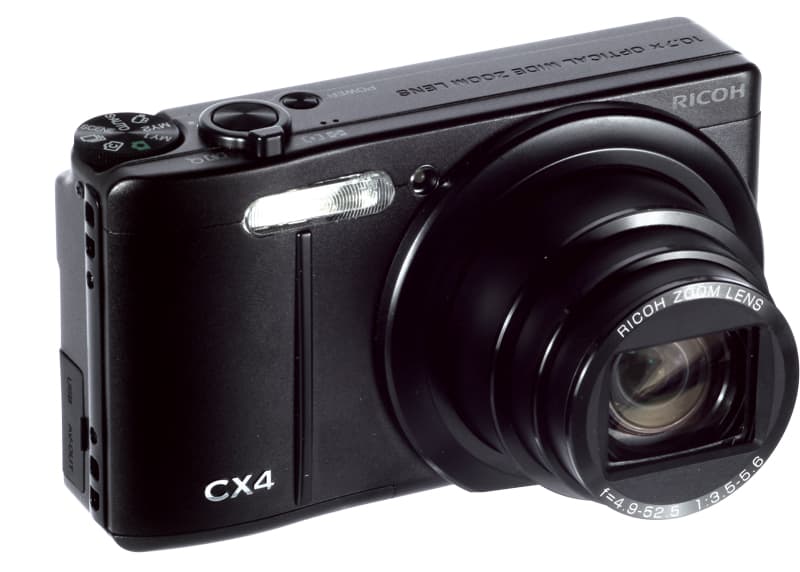With each wave of camera releases, it seems a new area of camera technology is developed across multiple brands. One by one, as each brand’s latest cameras are released, this same innovation pops up on other models.
When Ricoh’s CX3 was announced earlier this year, low levels of noise seemed to be the focus, achieved in part by dropping the number of pixels while maintaining the same-size sensor. A mere six months later and hot on the heels of recent releases from other manufacturers, Ricoh’s new CX4 offers enhanced image stabilisation, an electronic level and subject-tracking AF. I am interested to see what else is new and if these changes are enough to continue to enhance the CX series.
Build and handling
Ricoh’s CX4 keeps many of the impressive key features from the CX3. A 28-300mm (equivalent), 10.7x optical zoom lens is squeezed into a compact and modest 29.4mm deep body. The most notable ergonomic change is that the textured front handgrip has been removed and Ricoh has opted for the smooth body across the whole front, which is akin to the CX1. I prefer the textured front as the smooth front is quite slippery, although this is not a big issue with a small compact such as this.
An electronic level has been added that indicates to the user if the camera is being held level by both the display on screen or by an audible beep. I would recommend the display reminder because using a visual prompt is much more useful and the regular beep noise is grating.
A new option on the shooting mode dial is named creative mode selection (C). Prior to this it was the dynamic range (DR) mode. This change relays the additions of three new creative shooting modes of cross process, toy camera and soft focus. These effects offer fun shooting, with the toy camera mode giving a Lomo feel to an image while the soft focus mode enables more flattering portraits.
Added to the scene mode menu is night landscape multishot. A tripod is advisable in this mode as it processes multiple high-speed images into one image, resulting in low noise levels. The processing time for an image in this mode is around five seconds, which is slow, but I could create atmospheric shots of lamplit streets in the middle of the night.
Performance

Image: This abstract night-time image was shot at 1/9sec using Night Landscape mode
I used the CX4 in a variety of scenes using the auto settings and am pleased with the quality of my images. Auto white balance produces natural tones and the autoexposure is reliable, with exposure compensation at ±2EV available, too.
The CX4 has the same sensor as the CX3, and it handles noise as expected from a ten-million-pixel CMOS sensor, reaching the 20 marker on our resolution charts at ISO 100 with a steady drop off to the 14 marker at ISO 3200. The lowest available ISO is now 100, whereas in the CX3 it was 80. However, any differences in ISO 80 and ISO 100 are barely noticeable.
Following the current trend for improved image stabilisation (IS), the CX4 has a better capacity than the CX3 to shoot sharp images with good resolution in low light. This is because at 3.7EV, the enhanced IS offers three more stops of light so lower sensitivities can be selected for shooting. Using the CX4 image stabilisation I am regularly able to shoot at 1/15sec, which can mean the difference between using ISO 100 rather than ISO 400 in, say, overcast conditions.
There is an array of focus modes including face priority, spot and manual, with a new subject-tracking AF mode. I have tried subject tracking on a few models and have experienced mixed results. The CX4 is no exception, picking up moving subjects well at times, but in more crowded scenes it struggles to keep the focus lock on the subject.
Verdict
Ricoh trickles in improvements to the CX series, and the biggest enhancement to the CX4 is the improved image stabilisation.
It adds only minor refinements to what was an already solid CX3. In its own right, the CX4 is likely to please those looking for a compact camera offering fun and creative shooting with good-quality images.







